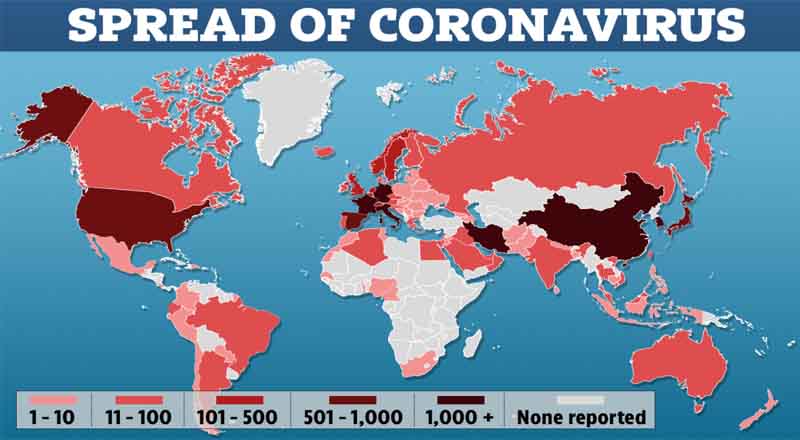The tally of countries with at least one confirmed case is long: China, Thailand, Taiwan, Japan, Singapore, South Korea, Vietnam, the United States, France, Australia, Malaysia, Nepal, Germany, Sri Lanka, Cambodia, Canada, United Arab Emirates, Finland, India, the Philippines, the United Kingdom, Italy, Russia, Sweden, Spain, Belgium, Egypt, Iran, Israel, Lebanon, Oman, Kuwait, Iraq, Austria, Bahrain, Switzerland, Croatia, Afghanistan, Pakistan, Brazil, Denmark, Estonia, Romania, North Macedonia, Nigeria, Netherlands, New Zealand, Mexico, Azerbaijan, Belarus, Greece, Lithuania, Mexico, Monaco, Norway, San-Marino, Algeria, Armenia, Qatar, the Czech Republic, Scotland, Ireland, Latvia, Saudi Arabia, Senegal, Tunisia, Jordan, Morocco, Portugal, Chile, Argentina and Ukraine only make up about half of the total number of countries and territories with cases.
While most of the cases have occurred in mainland China, the number of new cases in China are tapering off as the number of new cases in the rest of the world continues to rise. The chair of the WHO emergency committee said on January 23 that it was “too early” to call the coronavirus an emergency, and on January 30 on the organization declared the coronavirus outbreak a global public health emergency. On March 11, WHO labeled the coronavirus outbreak a pandemic and on March 13 President Donald Trump declared a national emergency in the United States.
The Chinese government, which is looking to avoid a repeat of the 2003 SARS outbreak, warned officials not to cover up the spread of the virus. The South China Morning Post reported that Beijing said anyone who withheld information would be “the sinner of a millennium to the party and the people” and would be “nailed on the pillar of shame for eternity.





